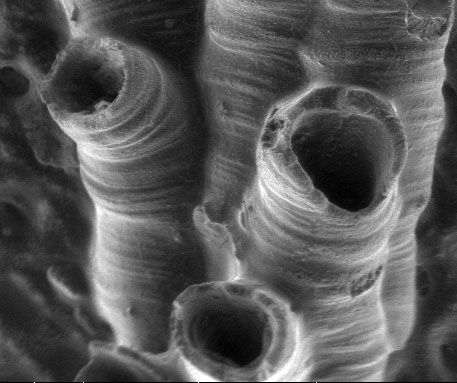- Hederellid
Taxobox|regnum=
Animal ia|phylum="incertae sedis "
image_caption=Scanning electron microscope image of a hederelloid from the Devonian of Michigan (largest tube diameter is 0.75 mm).Hederellids are
extinct colonialanimal s with calcitic tubular branchingexoskeleton s. They range from theSilurian to thePermian and were most common in theDevonian period. They are more properly known as "hederelloids" because they were originally defined as a suborder by Bassler (1939). Although they have traditionally been consideredbryozoans , they are clearly not because of their branching patterns, lack of an astogenetic gradient, and wide range in tube diameters (Wilson and Taylor, 2001). Work continues on assessing the true affinities of hederelloids.References
Bassler, R.S.(1939) The Hederelloidea. A suborder of Paleozoic cyclostomatous Bryozoa. Proceedings of the United States National Museum, 87:25-91.
Wilson, M.A. and Taylor, P.D. (2001) “Pseudobryozoans” and the problem of encruster diversity in the Paleozoic. PaleoBios, 21 (supplement to no. 2):134-135.
Wilson, M.A. and Taylor, P.D. (2006) Predatory drillholes and partial mortality in Devonian colonial metazoans. Geology 34: 565-568.
[http://www.sciencedaily.com/releases/2006/07/060712232259.htm]
Wikimedia Foundation. 2010.
